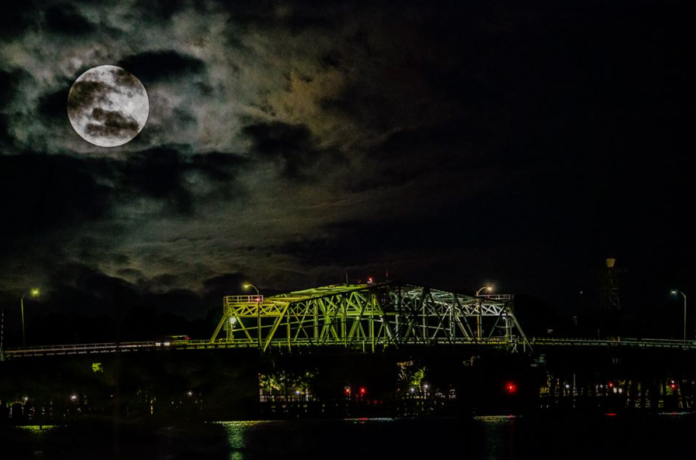Take a look up to the heavens, if Idalia lets us, and you’ll see a rare blue supermoon light up the sky over Beaufort, SC on Wednesday night.
Look to the east just after sunset to find it. It won’t be difficult to spot given it will be the brightest and largest moon of the year.
This moon is notable for a few reasons: For one, not only is it a full moon, but it’s also a Blue Moon, which means it’s the second full moon within a single calendar month. The supermoon will be at its fullest on Wednesday night, at 9:36pm.
The Blue Moon is the second full moon this month after the Full Sturgeon Moon, which rose on August 1st.
Plus, this Blue Moon is also a supermoon, meaning it coincides with perigee, the point in the moon’s orbit when it’s closest to Earth. For observers on the ground, that means it will appear slightly larger than normal, though only about 7% bigger.
The Blue Moon of August 2023 will also be joined by a special guest in the sky: Saturn.
The ringed gas giant will be just a few days past opposition, the point at which it lies directly opposite the sun as seen from Earth, making it especially bright in the night sky.
According to Space.com, as viewed from the Northern Hemisphere, Saturn will be in the constellation Aquarius, above and to the right of the moon.
Just after summer 2023 draws to a close on September 23rd, so too does this festival of supermoons, which ends on September 28th with the rise of September’s Full Corn Moon when the moon will be 224,657 miles (361,552 km) from Earth.
The Full Corn Moon will also mark the final supermoon of 2023, with the next supermoon scheduled to fall on Sept. 18, 2024.
Supermoons by definition happen “when a full moon coincides with the Moon’s closest approach to Earth in its elliptical orbit, a point known as perigee,” according to NASA.
“During every 27-day orbit around Earth, the Moon reaches both its perigee, about 226,000 miles (363,300 km) from Earth, and its farthest point, or apogee, about 251,000 miles (405,500 km) from Earth.”
Supermoons in general appear 17% bigger and 30% brighter than when the moon is at its farthest point away from Earth, according to NASA. Supermoons are slightly bigger and brighter than most full moons, too. Just because it’s bigger and brighter doesn’t necessarily mean you’ll see it unaided, so binoculars may give you a better view.
Enjoy the view of the supermoon, Beaufort, SC!










